
All categories
Featured selections
Trade Assurance
Buyer Central
Help Center
Get the app
Become a supplier

(1647 products available)



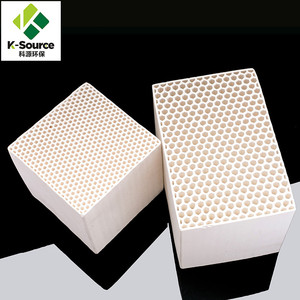
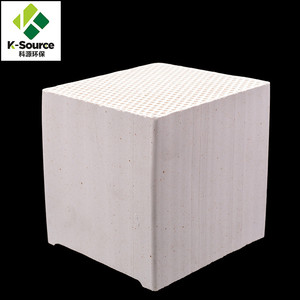

















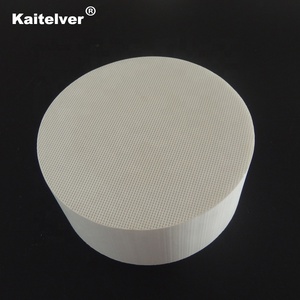
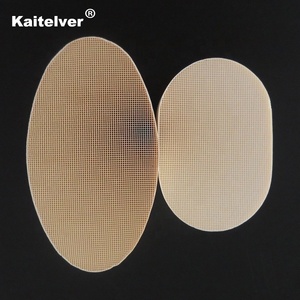


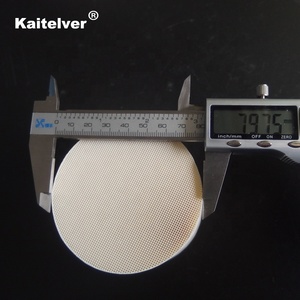











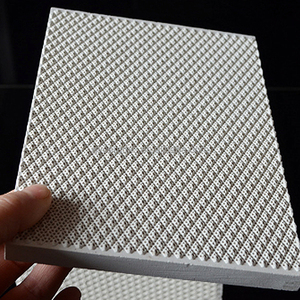
SCR (Selective Catalytic Reduction) honeycomb substrates are crucial components in emissions control systems, particularly in diesel engines. Cordierite, a durable ceramic material, is widely used to manufacture these honeycomb substrates due to its thermal shock resistance and low expansion properties. Cordierite SCR honeycomb substrates come in various types, distinguished primarily by their cell structures, porosity, and geometric configurations. Each type is tailored for specific catalytic applications and engine requirements. Below are some common types:
Standard Cell Density Substrates
Cell density in standard cell density substrates usually ranges from 200 to 600 cells per square inch. This, therefore, means that the lower the cell density, the larger the individual cells. These types of substrates balance flow resistance and catalytic surface area. A typical feature would be vehicle diesel engines that operate under normal conditions.
High Cell Density Substrates
High cell density substrates usually feature cell densities of 600 to 1200 cells per square inch. They, therefore, provide a large surface area for the catalyst. These types of substrates are particularly suitable for modern engines that have tighter emission regulations. Their design, however, tends to increase flow resistance.
Low Cell Density Substrates
Low cell density substrates normally have cell densities that are below 200 cells per square inch. In such cases, large cells provide enhanced exhaust flow rates. They are suitable for applications where back pressure needs to be minimized such as older engine models.
Foam Substrates
Foam substrates are normally constructed using ceramic foams rather than honeycomb structures. These are highly porous designs that provide exceptional spherical surface area for the catalyst. It is suitable for applications that require high filtration efficiency and low flow resistance.
Custom-Shaped Substrates
These substrates can be designed into specific shapes to fit unique exhaust system configurations. Such flexibility in design makes them ideal for specialized industrial vehicles or machinery with space constraints.
Here are some of the key features of the cordierite SCR honeycomb substrate:
Thermal Shock Resistance
The main characteristic feature of cordierite material is its exceptional thermal shock resistance. The cordierite scr honeycomb substrate can, therefore, withstand rapid temperature changes without cracking. This is especially important in applications that involve fluctuating exhaust temperatures.
Low Coefficient of Thermal Expansion (CTE)
The CTE of cordierite is lower than many other ceramic materials. This, therefore, makes it ideal in high-temperature environments. Additionally, it ensures that the SCR substrate does not expand or contract excessively, leading to structural integrity.
High Porosity and Pore Connectivity
SCR honeycomb substrates are normally highly porous and have interconnected pores. They, therefore, allow for efficient mass transfer of reactants (such as ammonia) during the selective catalytic reduction process. This enhances the overall catalytic activity and efficiency.
High Surface Area
SCR honeycomb substrates often come with a high surface area. Most of them are coated with precious metals such as platinum, palladium, and rhodium to form a catalyst. These metals provide active sites for the chemical reactions that reduce harmful emissions.
Durability and Mechanical Strength
The cordierite SCR honeycomb substrate is designed for enhanced mechanical strength and durability, making it suitable for harsh automotive and industrial environments. It can withstand chemical attacks, erosion, and wear for a considerable period of time.
Lightweight Construction
SCR honeycomb substrates normally feature a low-density design. This, therefore, contributes to the overall reduction in weight of the exhaust system. The lightweight construction ensures that the vehicles do not have excess weight, therefore improving fuel efficiency.
Cordierite SCR honeycomb substrates are widely applied across different industries. Below are the main applications:
Automotive Industry
Cordierite SCR honeycomb substrates play a critical role in automotive diesel engines. They help reduce nitrogen oxide emissions while ensuring compliance with environmental regulations. Typically, these substrates are designed to ensure an optimized exhaust flow rate and increased catalyst interaction.
Commercial Vehicles
Trucks, buses, and other heavy-duty vehicles that run on diesel engines have SCR systems to manage emissions effectively. The cordierite substrates here are specifically designed to handle the elevated exhaust temperatures and back pressures characteristic of heavy-duty operations.
Industrial Machinery
Many pieces of industrial machinery powered by diesel engines, such as generators, construction equipment, and marine engines, rely on Cordierite scr substrates for emission control. The honeycomb designs help ensure these systems operate efficiently and meet industrial emission standards.
Power Generation
In both standby and prime power generation systems, SCR substrates help minimize nitrogen oxide emissions into the atmosphere. Typically, cordierite substrates are extremely effective at maintaining emission compliance in various power generation scenarios.
Rail Transport
Locomotives powered by diesel engines have stringent emission regulations. The rail operators, therefore, utilize Cordierite honeycomb substrates within their SCR systems to reduce emissions and achieve compliance.
Mining and Construction Operations
SCR systems with Cordierite substrates in this case help reduce the environmental impact of emissions from large diesel engines. These engines are often used in heavy machinery, trucks, and generators. This, therefore, allows mining and construction companies to operate legally and sustainably.
Compatibility with Engine Type
The cordierite SCR honeycomb substrate selected should normally be compatible with the engine type. It should also meet the emission standards that are in the industry. Buyers should prefer substances that facilitate easy integration into existing exhaust systems.
Cell Density and Size
Honeycomb cell density and size parameters should be considered based on the specific application requirements. Lower cell densities help minimize back pressure, whereas higher densities usually provide a larger surface area for catalytic activity. Buyers should ensure they settle for the ideal balance that meets their engine's performance needs.
Porosity and Pore Structure
The substrate's porosity and pore structure directly affect mass transfer efficiency within the SCR system. High porosity substrates usually enhance mass transfer while low porosity ones are ideal for reduced flow resistance. Buyers should select the ideal substrate that optimizes reactant utilization and emission reduction efficiency.
Thermal Shock Resistance
There might be substantial temperature fluctuations in diesel exhaust. This is due to variations in engine load and operating conditions. Therefore, cordierite substrates need to have high thermal shock resistance. This ensures structural integrity and long-term reliability in dynamic temperature environments.
Durability and Mechanical Strength
Cordierite substrates should normally have high durability and mechanical strength. It helps support the substrate's structure during thermal cycling and mechanical vibrations in the engine compartments. Long-lasting materials are ideal for reducing maintenance frequencies and costs.
Coating and Catalytic Activity
Most cordierite substrates come factory-coated with precious metals to enhance their catalytic activity. Buyers should ensure they settle for substrates with uniform catalyst coatings. It helps ensure even distribution during the SCR processes. Also, substrates coated with a higher density of catalytic metals will outperform those with lower coating densities.
Quality and Manufacturing Standards
Buyers should prioritize substrates that meet well-established quality and manufacturing standards. This ensures a higher substrate performance level. They also should source them from reputable manufacturers who have demonstrated expertise in producing high-quality honeycomb substrates.
Cost-Effectiveness
In this case, there needs to be a consideration on the long-term operational benefits and the initial costs. Buyers should also check for engine efficiency improvement, reduced emissions, and lower maintenance costs when weighing the overall cost against the substrate quality.
The main purpose of a cordierite SCR honeycomb substrate is to facilitate the selective catalytic reduction of nitrogen oxides in diesel exhaust by providing a structured surface for the catalyst to interact efficiently with exhaust gases and reactants.
Cordierite is often preferred for SCR honeycomb substrates since it possesses exceptional thermal shock resistance, low thermal expansion, and high porosity. These properties ensure durability, efficiency, and enhanced emission control performance.
Some key features of cordierite SCR substrates include high porosity, interconnected pores, a large surface area, thermal shock resistance, and a lightweight yet mechanically strong structure. They ensure effective mass transfer, catalytic activity, and structural integrity in dynamic exhaust environments.
Common industrial applications that usually use cordierite SCR substrates include the automotive, commercial vehicle, industrial machinery, power generation, rail transport, mining, and construction operations. They help them manage emissions while complying with environmental regulations.
To select the right substrate, buyers should consider factors such as compatibility with engine types, cell density, thermal shock resistance, durability, coating quality, and overall cost-effectiveness. Thus applying these factors will allow them to settle for the substrate that will meet performance and emission compliance needs effectively.